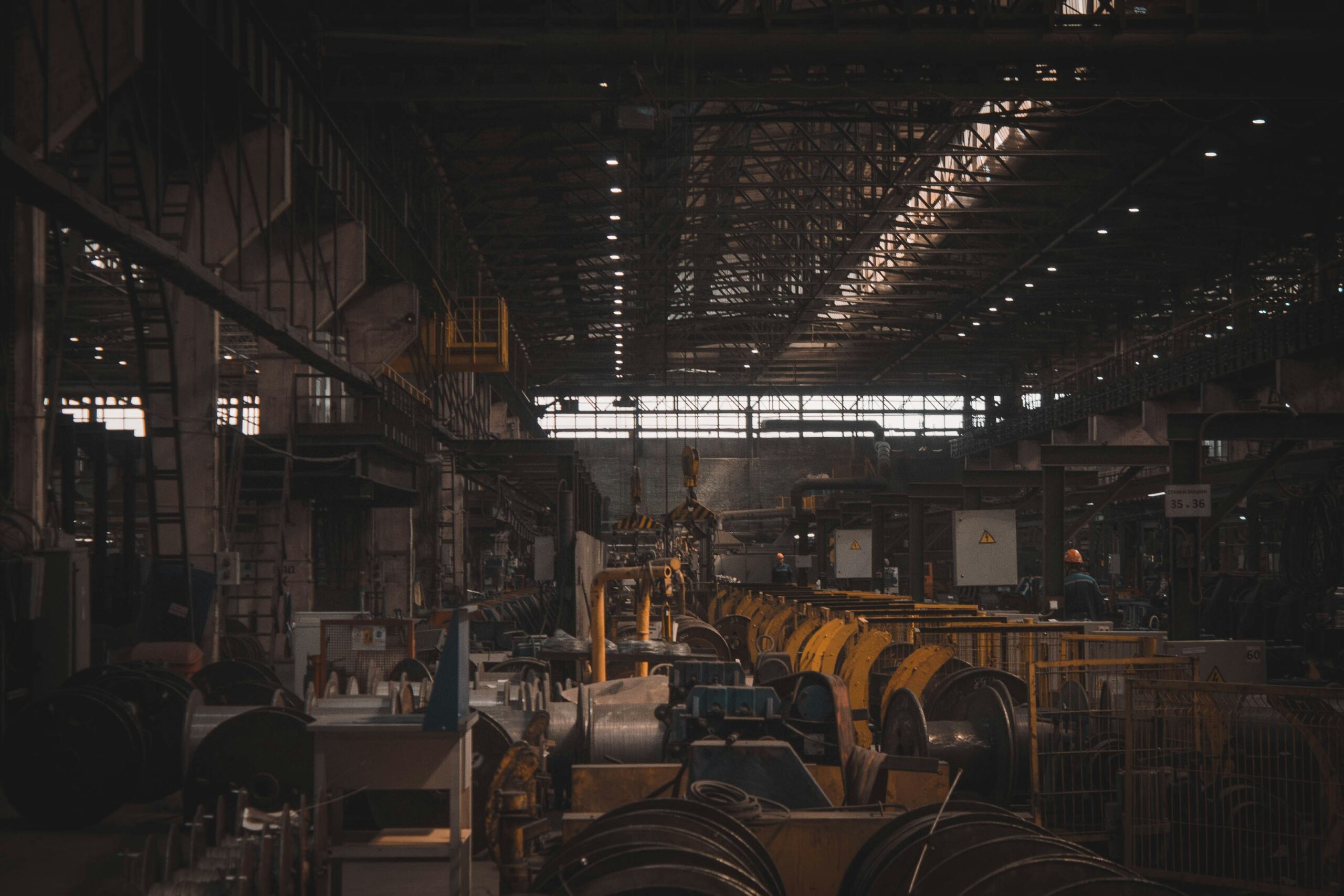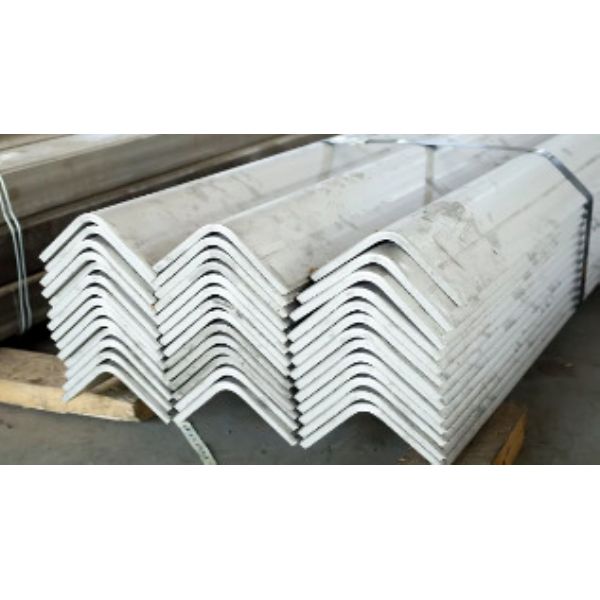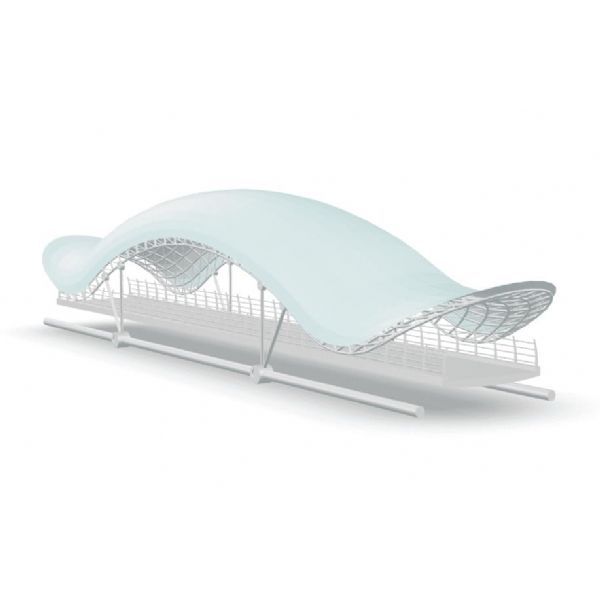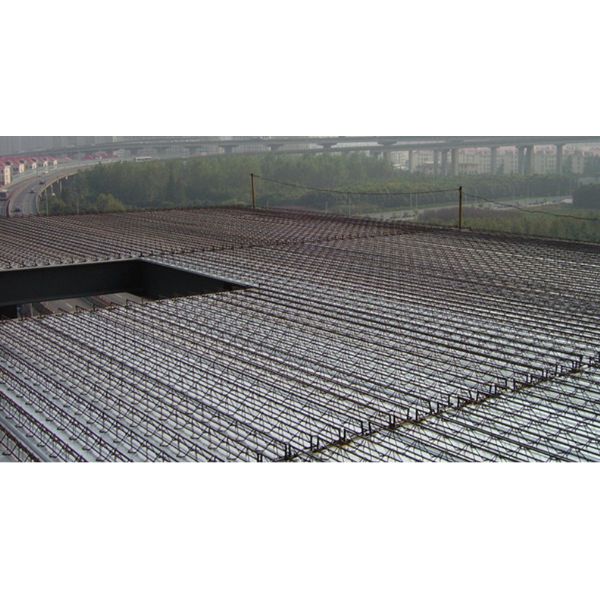In today’s fast-paced industrial world, companies are constantly seeking ways to build smarter, faster, and stronger. Traditional construction methods often struggle to keep up with modern production demands—where every day saved means higher efficiency and earlier returns. That’s where the steel workshop building stands out as a game-changer. Combining precision engineering with exceptional durability and rapid installation, these structures have redefined the standards for modern manufacturing, storage, and fabrication facilities. More than just buildings, they are the backbone of industrial progress—designed for performance, built for longevity, and optimized for growth.
From initial design concepts to on-site completion, every stage in developing a steel workshop building plays a crucial role in determining its performance and life cycle. This article walks you through the full process — from conceptual planning and structural design to fabrication, erection, and maintenance — revealing why steel remains the material of choice for industrial construction.
Understanding Steel Workshop Buildings
Definition and Core Characteristics
A steel workshop building is a prefabricated or custom-engineered structure designed primarily for industrial applications such as production, assembly, or mechanical work. These buildings rely on a steel framework — composed of columns, beams, and trusses — to carry the load of walls, roofing, cranes, and internal equipment.
| Component | Function | Typical Material |
|---|---|---|
| Main Frame | Load-bearing structure (columns & beams) | Q355B / S355JR / ASTM A36 |
| Purlins & Girts | Support for roof and wall cladding | Galvanized steel (Z-section or C-section) |
| Roof & Wall Panels | Protection and insulation | Color-coated steel, sandwich panels |
| Bracing System | Enhances lateral stability | High-tensile round bar or angle |
Key Advantages of Steel Workshop Buildings
- Durability: Resistant to corrosion, fire, and heavy loading conditions.
- Speed of Construction: Prefabricated components shorten on-site installation time.
- Cost Efficiency: Minimal maintenance and long service life reduce operational costs.
- Flexibility: Adjustable spans and bay spacing for different industrial uses.
- Sustainability: 100% recyclable steel and low environmental impact.
Common Applications
The adaptability of steel workshop buildings makes them suitable for a wide range of industrial functions:
- Heavy machinery workshops and maintenance centers
- Automotive assembly and repair plants
- Fabrication and welding facilities
- Logistics and distribution warehouses
- Agricultural processing and feed storage
Conceptual Design and Planning Stage

Identifying Project Requirements
Every successful steel workshop building begins with a comprehensive needs analysis. Factors such as the type of operation, space requirements, load demands, and future expansion must be clearly defined. Site conditions — including soil bearing capacity, wind zones, and seismic categories — also influence the structural design and foundation system.
Structural Design Considerations
Choosing the right structural system ensures stability and efficiency. Engineers typically select from rigid portal frames, N-truss systems, or lattice structures depending on span width and function. The load analysis process considers:
- Dead load (steel self-weight)
- Live load (equipment, personnel, cranes)
- Wind and snow loads based on local codes
- Seismic resistance and deflection limits
Architectural and Functional Layout
A well-designed steel workshop building integrates operational flow and safety. The internal layout separates production zones from storage, while providing smooth logistics paths for forklifts or cranes. Architectural design may include skylights, canopies, and corporate façade treatments to enhance aesthetics and natural lighting.
Budgeting and Cost Optimization
Cost efficiency is a primary advantage of steel construction. Typical cost components are shown below:
| Cost Element | Approx. Percentage | Description |
|---|---|---|
| Steel Material | 40–50% | Frames, columns, beams, purlins |
| Roof & Wall Cladding | 15–20% | Insulated panels, color sheets |
| Fabrication & Painting | 10–15% | CNC cutting, welding, coating |
| Foundation & Civil Work | 10–15% | Concrete base and flooring |
| Transportation & Installation | 5–10% | On-site assembly, cranes, labor |
Using standardized portal frames and prefabricated modules can reduce costs by up to 25% compared to traditional reinforced concrete buildings.
Engineering and Material Selection
Choosing the Right Steel Grade
The durability of a steel workshop building depends on proper material selection. Below are commonly used grades and their advantages:
| Steel Grade | Yield Strength (MPa) | Key Benefit |
|---|---|---|
| Q355B (China) | 355 | Excellent balance of strength and weldability |
| S355JR (EU) | 355 | High structural integrity under load |
| ASTM A36 (US) | 250 | Cost-effective option for small workshops |
| SM490A (Japan) | 325 | Superior ductility for seismic resistance |
Roofing and Cladding Systems
Roofing and cladding not only protect the structure but also enhance energy efficiency. Modern steel workshop buildings often use insulated sandwich panels or standing seam systems for superior weather resistance. Wall cladding can include ventilated façades or color-coated steel sheets with anti-fading finishes.
Connection and Fastening Systems
- Bolted Connections: Preferred for modular assembly and easy maintenance.
- Welded Joints: Used in heavy-duty frames requiring high rigidity.
- Anchor Bolts: Precisely embedded during foundation works to align columns accurately.
Surface Treatment and Corrosion Protection
Surface finishing extends the lifespan of any steel workshop building. Common protection systems include:
- Hot-dip galvanizing for outdoor frames exposed to moisture.
- Epoxy and polyurethane coatings for industrial environments.
- Fireproof paint systems conforming to international safety standards.
Fabrication and Prefabrication Process
Factory-Level Fabrication
At the heart of every modern steel workshop building lies precision fabrication — a process where engineering accuracy meets industrial craftsmanship. All primary members, including columns, beams, and trusses, are manufactured in a controlled factory environment to ensure consistency and quality. Each component is meticulously cut, drilled, welded, assembled, and coated following approved shop drawings derived from 3D modeling software such as Tekla Structures or AutoCAD Steel Detailer.
Advanced CNC cutting and automatic drilling machines guarantee dimensional accuracy within millimeter tolerance. Welding operations are carried out by certified welders using methods like Submerged Arc Welding (SAW) or Metal Inert Gas (MIG) welding, depending on the member type and thickness. Non-destructive testing (NDT), such as ultrasonic or magnetic particle inspection, is performed to confirm that all welds meet the required strength and integrity standards.
Once structural members are fabricated, surface treatments are applied — including shot blasting, galvanizing, and high-performance coatings — to protect against corrosion and enhance longevity. Each part is tagged with a unique identification code, ensuring complete traceability from production to installation. This factory-driven precision not only ensures superior quality but also significantly reduces errors and rework during on-site assembly.
Logistics and Transport Management
The journey of a steel workshop building from factory to site requires meticulous logistics coordination. After inspection and approval, all components are carefully packed, wrapped, and loaded for transport. Members are grouped and labeled according to erection sequence, ensuring smooth handling during installation.
For long-span beams, heavy columns, or truss assemblies, specialized trailers and lifting equipment are used to avoid deformation and transit damage. Each shipment is accompanied by packing lists, dimensional drawings, and handling instructions. Route planning plays a vital role — bridges, turns, and clearances must be evaluated in advance to prevent transport delays or accidents.
In large-scale international projects, containers or bulk shipments are preferred for overseas transport. Custom wooden pallets and steel frames are employed to secure the components during sea or land freight. Proper logistics not only minimize damage but also improve the overall efficiency of the project timeline, ensuring all materials arrive safely, on time, and ready for installation.
On-Site Assembly and Erection
Once the components reach the construction site, the real transformation begins. The assembly process of a steel workshop building follows a sequential, engineered approach that prioritizes safety, speed, and precision. Typically, erection is carried out in the following stages:
- Foundation Preparation: Concrete foundations are cast and cured according to the load requirements. Anchor bolts are positioned precisely using templates to align with column base plates.
- Main Frame Erection: Columns and rafters are lifted using cranes and connected by high-strength bolts. Temporary bracing ensures alignment during this stage.
- Secondary Structure Installation: Purlins, girts, and bracing systems are installed to enhance stability and prepare for roofing and wall cladding.
- Roofing and Cladding: Insulated roof panels, skylights, and wall sheets are mounted, ensuring weather-tight performance and energy efficiency.
- Finishing Works: Flashings, gutters, and trims are fixed to complete the envelope, followed by door and window installation.
Throughout this process, erection crews use mobile cranes, scissor lifts, and safety harnesses to ensure smooth and accident-free operations. For a typical 3,000–5,000 m² steel workshop building, on-site assembly can be completed within 30–45 days — a remarkable speed compared to traditional concrete structures. Projects exceeding 10,000 m² are often completed in less than 90 days due to efficient modular coordination and prefabrication accuracy.
Every assembly phase is monitored by field engineers to ensure that the vertical alignment, plumbness, and bolt tension meet design specifications. The fast-track installation method minimizes weather-related delays and allows multiple trades to work in parallel, accelerating project delivery.
Quality Assurance and Testing
Quality assurance (QA) and quality control (QC) are the cornerstones of a reliable steel workshop building. Each stage — from material procurement to site erection — is governed by international standards such as ISO 9001, AWS D1.1, and ASTM specifications. Comprehensive inspection protocols are followed to verify that fabrication, painting, and installation all meet the specified criteria.
On-site testing procedures typically include:
- Bolt Torque Verification: Ensures that all high-tensile bolts are tightened to the correct specifications.
- Weld Examination: Non-destructive testing checks for internal defects or cracks in critical weld joints.
- Dimensional Tolerance Checks: Confirms alignment, straightness, and elevation accuracy using total stations or laser levels.
- Roof Water Tightness Test: Conducted after cladding installation to confirm proper sealing and drainage.
- Load Testing: Applied on cranes, mezzanine floors, or roof systems to validate load-bearing capacity.
All inspection reports, test certificates, and material traceability records are compiled into a comprehensive handover dossier, ensuring full transparency for the client. This robust quality management process guarantees that every steel workshop building not only meets design intent but also delivers dependable performance for decades to come.
Streamlined Integration Between Factory and Site
What truly defines modern construction efficiency is the seamless integration between off-site fabrication and on-site erection. Thanks to advanced Building Information Modeling (BIM) and digital workflow management, engineers and project managers can coordinate fabrication, shipping, and assembly in real time. This digital synchronization reduces material waste, eliminates scheduling conflicts, and allows immediate resolution of field issues.
The result is a leaner, faster, and more sustainable construction cycle — where precision manufacturing meets high-speed assembly to produce a finished steel workshop building with unmatched quality and consistency. This synergy not only accelerates delivery but also minimizes environmental impact by reducing on-site waste, noise, and emissions.
Durability and Long-Term Performance
Structural Integrity Over Time
The long service life of a steel workshop building results from its excellent strength-to-weight ratio and precision-engineered joints. When properly designed and maintained, such structures can perform reliably for more than 50 years, even in demanding environments. Rigorous detailing—especially around column bases, bracing, and roof connections—prevents fatigue and ensures that the framework resists cyclic loading from cranes and equipment.
Maintenance and Upkeep
Although steel is highly durable, preventive maintenance guarantees consistent performance. Key maintenance actions include:
- Re-painting every 5–7 years depending on environmental exposure.
- Checking bolts and tightening to specified torque values.
- Inspecting roof fasteners and sealants for water ingress.
- Cleaning gutters and downpipes to avoid corrosion from trapped debris.
By implementing a scheduled maintenance plan, owners can reduce lifecycle costs and extend the functional lifespan of their steel workshop building.
Upgrading and Expansion Possibilities
Because modular framing allows bolt-on connections, expansion is straightforward. Additional bays or annexes can be attached to the original steel workshop building without disrupting ongoing operations. Roof-mounted solar panels, new insulation layers, or automated ventilation systems can also be installed easily, adapting the facility to future production needs or sustainability goals.
Sustainability and Energy Efficiency

Environmental Impact of Steel Structures
Steel ranks among the most sustainable construction materials. Nearly 100 % of structural steel can be recycled without loss of strength. Moreover, fabrication waste is minimal because members are cut to size in controlled factory conditions. A steel workshop building therefore supports global goals for low-carbon and circular-economy development.
Green Design Strategies
Integrating sustainability into the design stage enhances long-term performance. Common strategies include:
- Installing skylights or translucent roof panels to reduce lighting demand.
- Using insulated sandwich panels to minimize energy loss.
- Incorporating rainwater harvesting and grey-water reuse systems.
- Applying reflective roof coatings to lower internal temperatures in tropical regions.
Certifications and Standards
Modern steel workshop buildings can be designed to meet environmental certification standards such as ISO 14001, LEED Silver or Gold, and BREEAM “Very Good.” These frameworks reward efficient material use, energy-saving design, and waste management—factors that also improve a company’s corporate sustainability profile.
Case Studies and Best Practices
Heavy Equipment Workshop
A 6 000 m² facility built for a machinery manufacturer required a 12 m clear height and twin overhead cranes. Using Q355B steel, engineers adopted a rigid portal frame with 30 m spans. Prefabrication reduced the construction schedule to just 22 weeks. The completed steel workshop building now supports heavy-duty assembly lines with minimal vibration and excellent natural lighting through ridge vents and skylights.
Agricultural Processing Plant
For an agribusiness client in a humid region, a lightweight truss system with open-gable ventilation was selected. The structure covers 4 500 m² and incorporates sandwich panels for insulation. Despite high humidity, galvanization and epoxy coating have kept corrosion at bay, proving the resilience of the steel workshop building design under tropical conditions.
Lessons Learned and Recommendations
- Engage structural engineers early to align loads, span requirements, and equipment layout.
- Adopt prefabricated systems to minimize site errors and save installation time.
- Use standardized modules to simplify future expansion.
- Implement comprehensive QA/QC at both factory and site levels.
Choosing the Right Partner for Your Steel Workshop Project
Why Expertise Matters
Designing and erecting a steel workshop building requires multidisciplinary expertise—structural, architectural, and logistical. Experienced suppliers understand load distribution, connection detailing, and efficient material use, ensuring that the finished structure meets all performance and safety criteria.
Evaluating a Reliable Manufacturer
When selecting a supplier, consider the following checklist:
| Evaluation Aspect | Key Question | Why It Matters |
|---|---|---|
| Experience | How many similar projects completed? | Indicates proven capability. |
| Design Certification | Are engineers licensed and code-compliant? | Ensures structural safety. |
| Fabrication Quality | Does the factory use CNC and QC testing? | Guarantees precision. |
| Project Timeline | Can they meet delivery deadlines? | Prevents costly delays. |
| After-Sales Support | Is maintenance guidance provided? | Extends building lifespan. |
Collaborating with XTD Steel Structure
With decades of experience in global steel construction, XTD Steel Structure provides end-to-end solutions—from conceptual design to on-site installation. The company’s portfolio includes factory complexes, logistics centers, and energy-sector facilities across Asia, Africa, and Europe. Each steel workshop building delivered by XTD Steel Structure is engineered for efficiency, safety, and long-term value.
Conclusion: From Blueprint to Reality
Building a durable steel workshop building is a comprehensive process that starts long before steel fabrication begins. It involves accurate needs assessment, meticulous structural design, responsible material selection, and precise on-site execution. When these steps are coordinated effectively, the outcome is an industrial facility that performs reliably for decades while minimizing environmental impact.
From concept to completion, steel remains unmatched in its ability to combine strength, speed, and sustainability. Whether for heavy manufacturing, storage, or specialized fabrication, the modern steel workshop building continues to set the benchmark for industrial excellence.
Interested in custom-engineered steel solutions? Visit XTD Steel Structure to explore design options and request a professional consultation.






